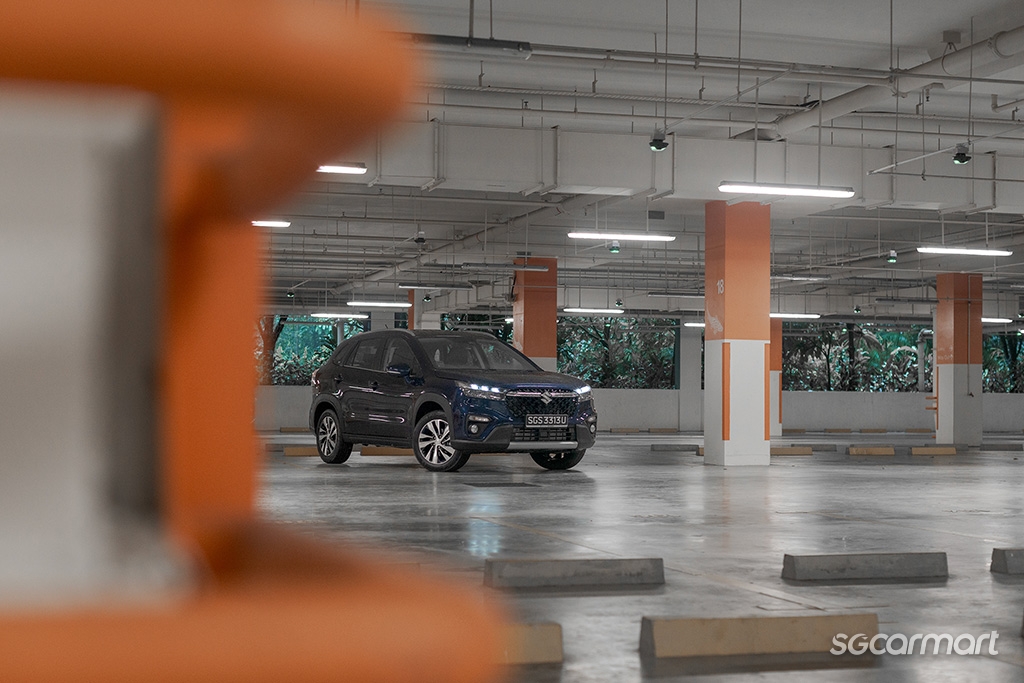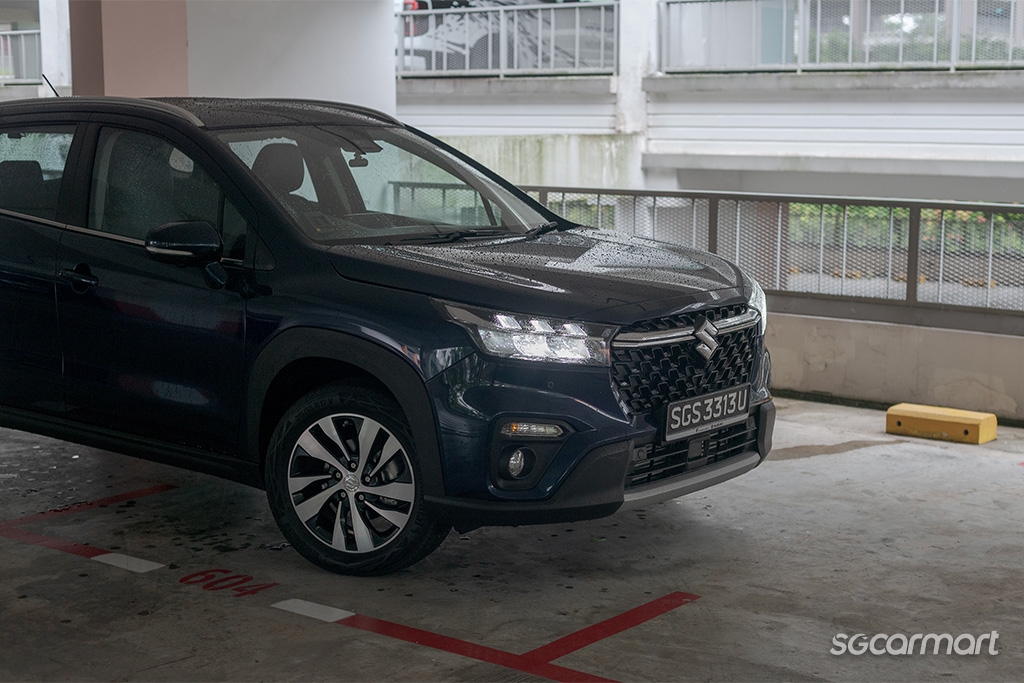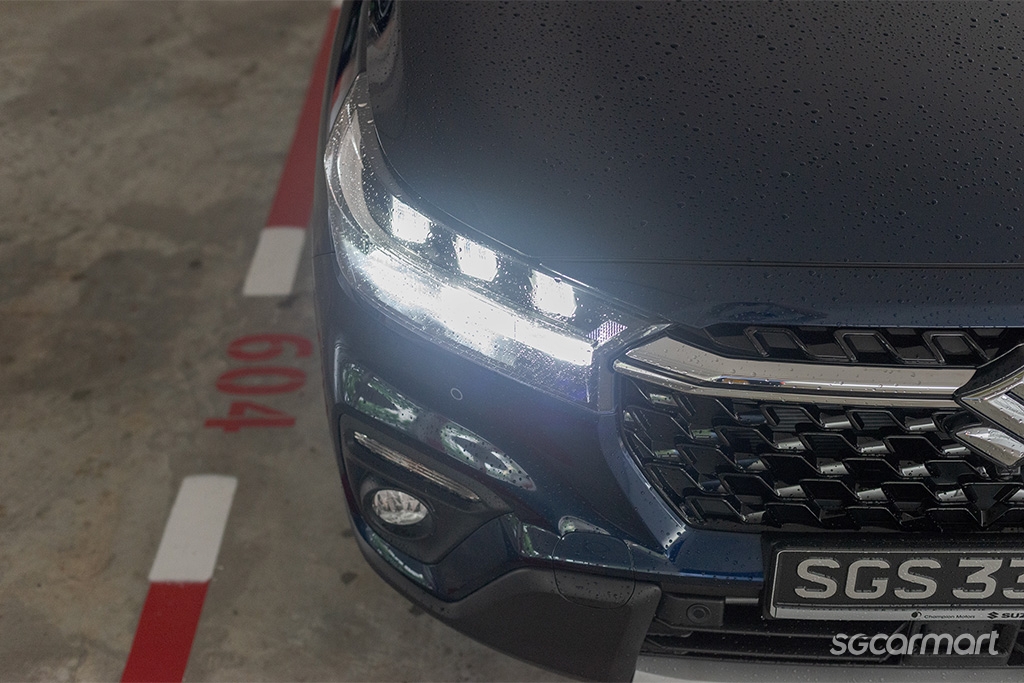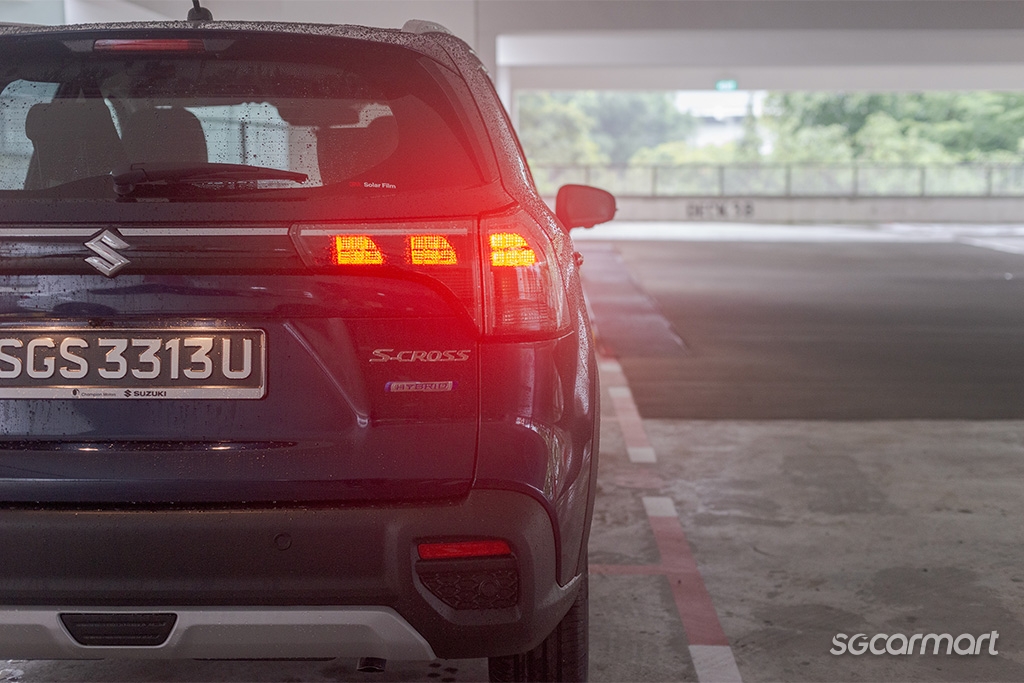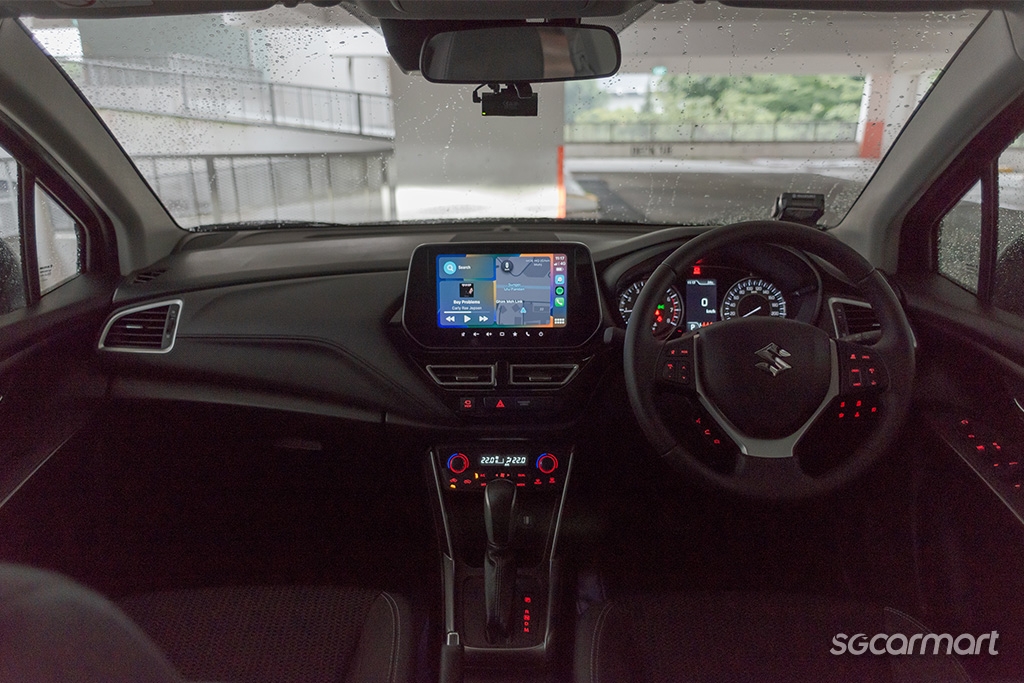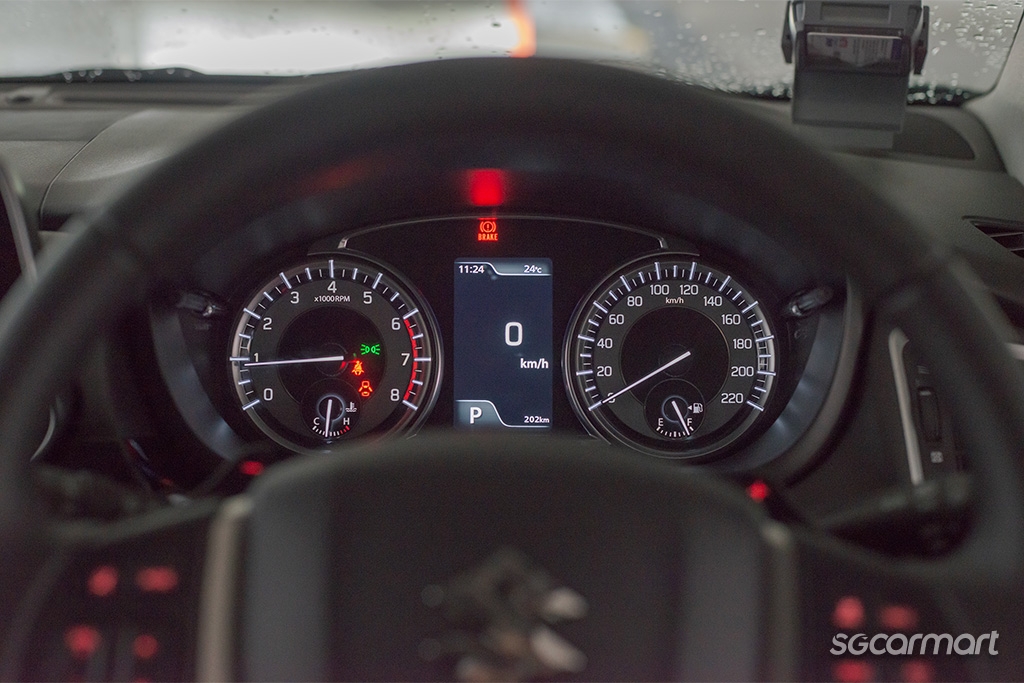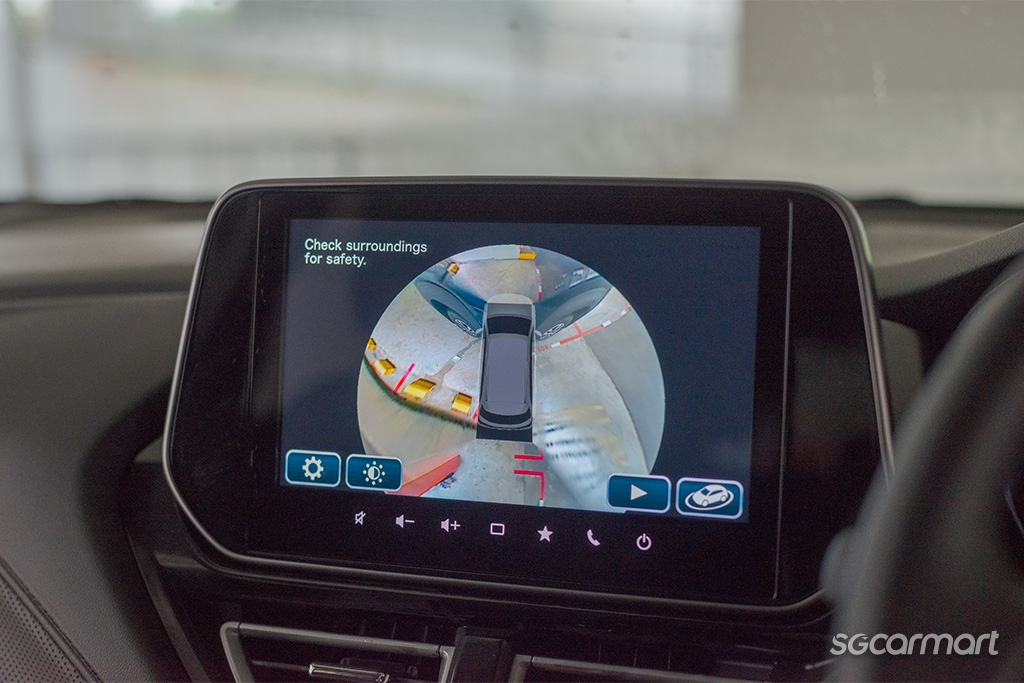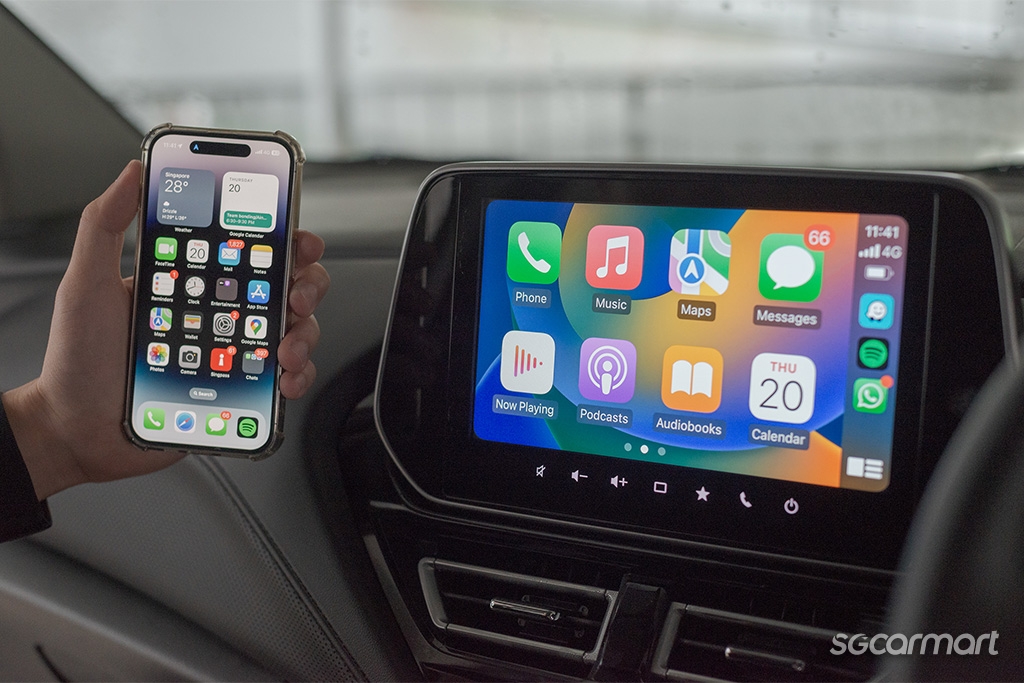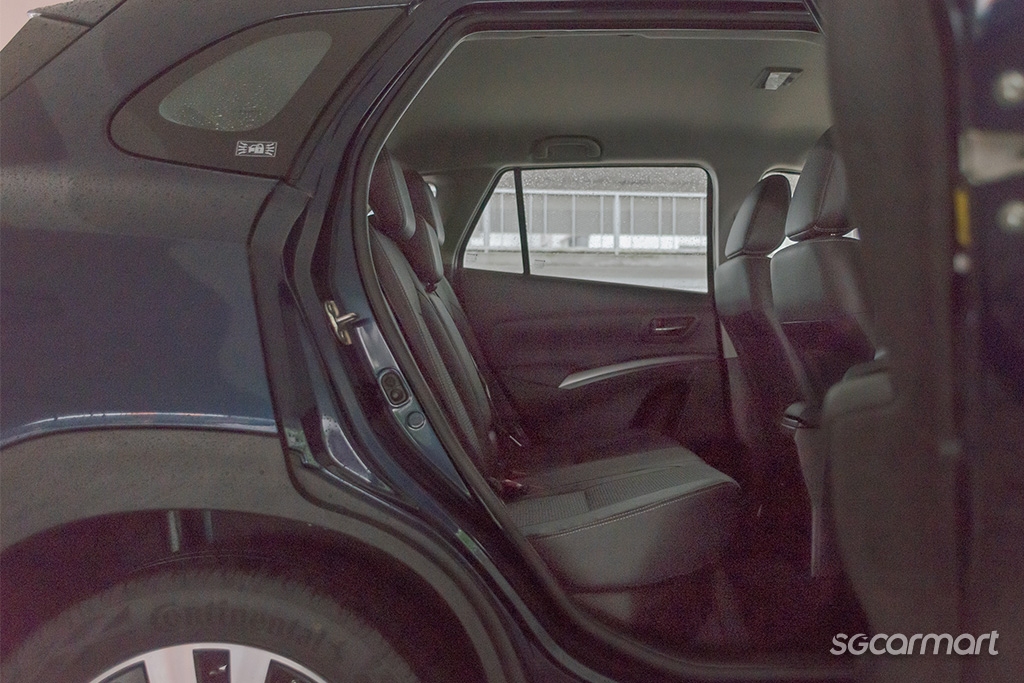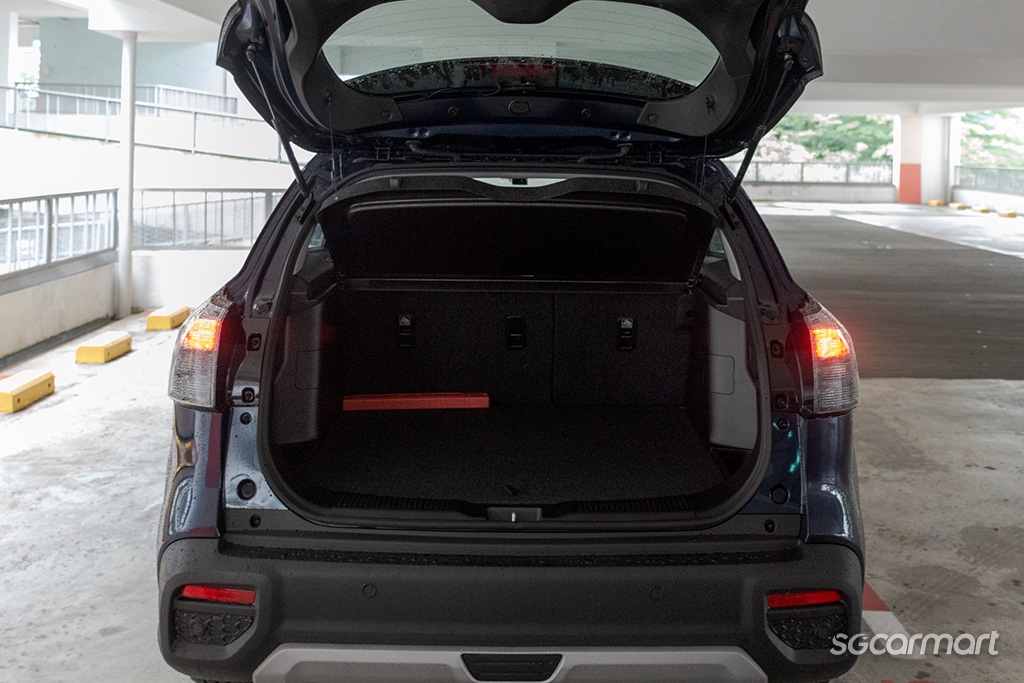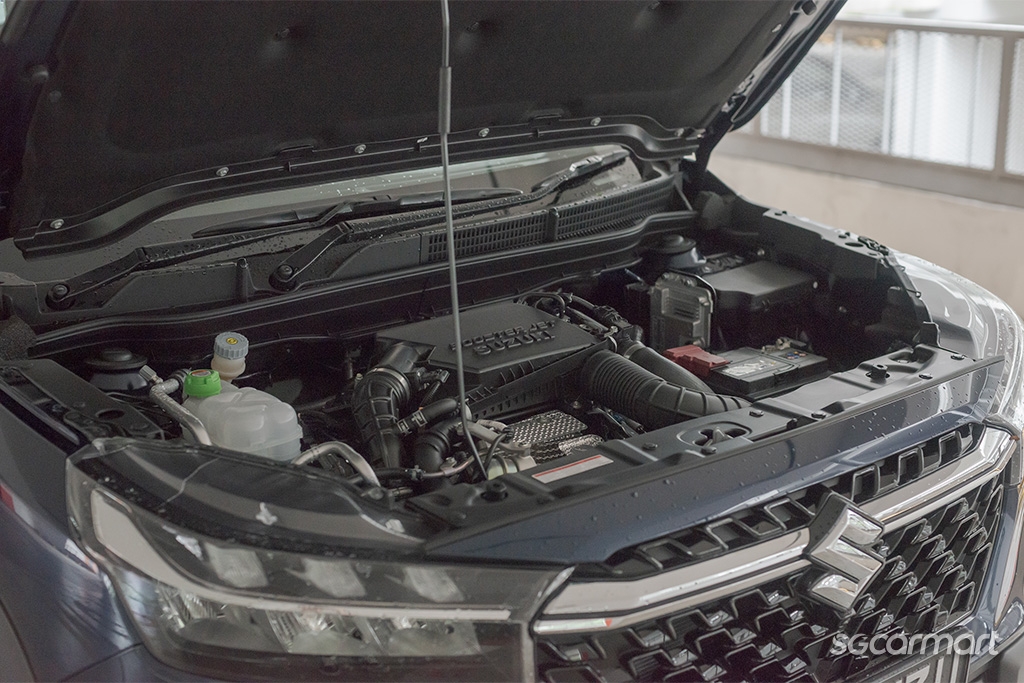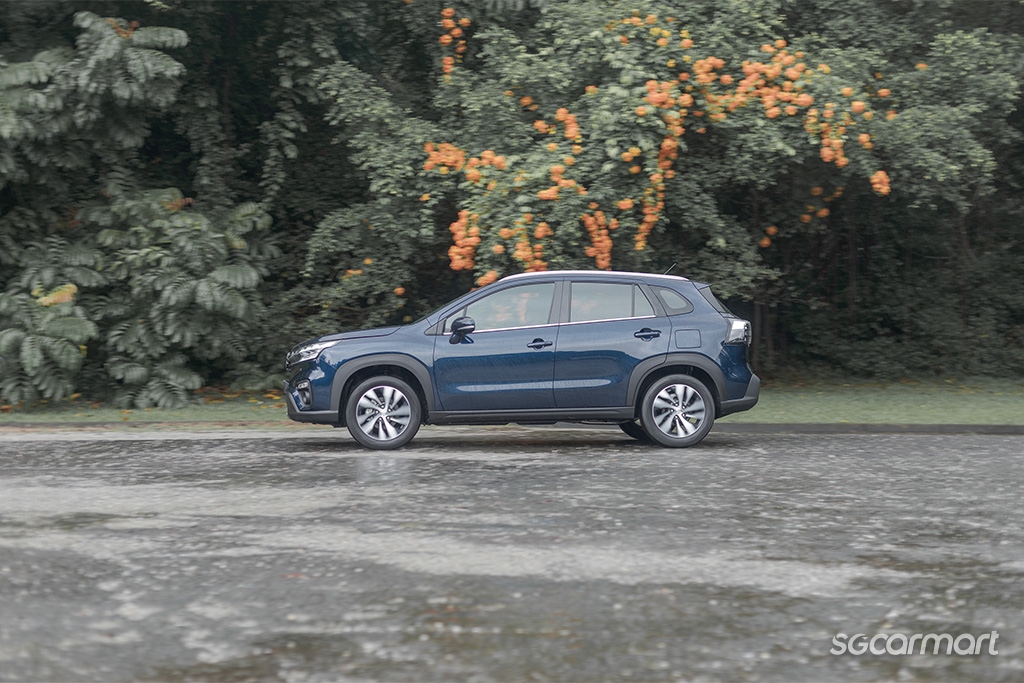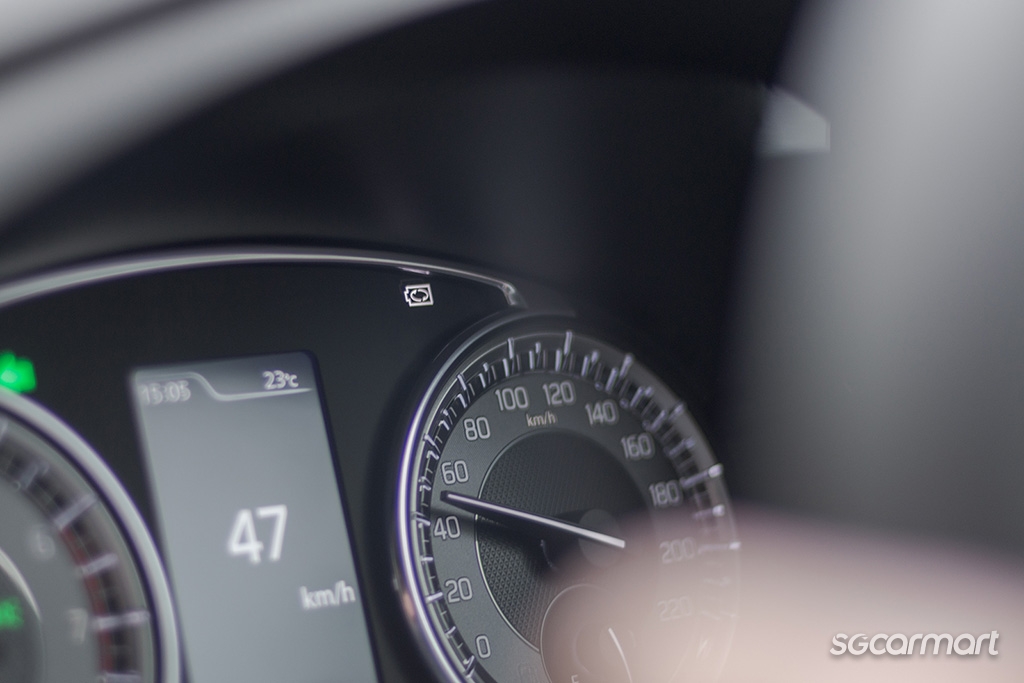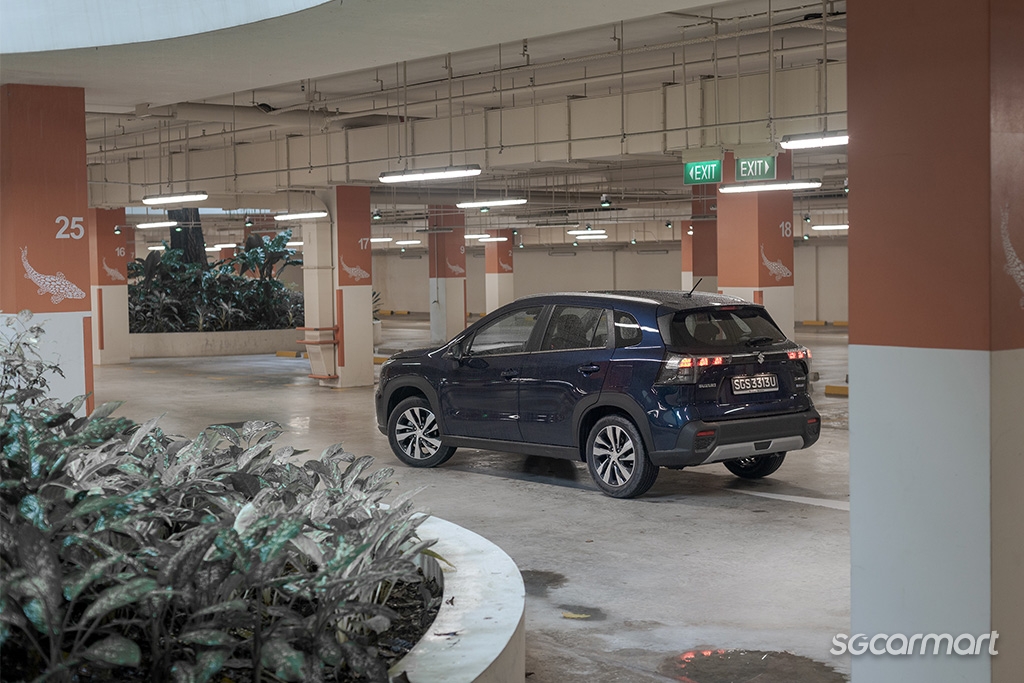Suzuki S-Cross 1.4 Mild Hybrid Review
26 Jul 2023|38,631 views
What We Like
No-frills functionality holds its own charm
Spacious interior
Surprisingly smooth and perky drivetrain
Easy to drive
Mild hybrid system returns commendable fuel economy
What We Dislike
Slightly dated interior
No rear aircon vents
Perceptible switches between starter generator and engine
Rewind the clock back to the early 2000s, and against the backdrop of roads still dominated by sedans, Suzuki had already launched its own high-riding hatch onto the scene: The SX4. One generation later, it would then become the SX4 S-Cross (or simply, the S-Cross, as it was officially known in Singapore).
For a brand to have a compact crossover in its lineup, however, is now more the rule than the exception. And as many of today's best selling heavyweights have shown, longstanding recognition as a nameplate isn't even required to win favour among drivers.
It is this significantly more-crowded field that the all-new Suzuki S-Cross charges into in 2023, eager to remind us of its presence - and intriguingly, still chugging along to the beat of its own drum.
The first-generation SX4, as mentioned, felt like a raised hatchback with some black cladding and roof rails, while its successor relied still on an overall softness to its silhouette as it leaned more heavily into the crossover look. In contrast to both of them, this is as conventionally SUV-like that the S-Cross, in its third-generation, has ever looked.
Suzuki's relatively lean local lineup means the S-Cross looks nothing like its siblings here - with neither the doe-eyed cheeriness of the Swift/Swift Sport, nor the slatted grilles of the Jimny and Ignis.
Chunky wheel arches, boxier styling, and a more upright front end give the S-Cross a properly SUV-like demeanour. Meanwhile, clever styling creates the impression that its head lights connect seamlessly to the grille's central chrome piece
Instead, its boxy styling, more upright front grille and chunky wheel arches give off the impression that it wouldn't resist the suggestion of tackling a small dirt road. (It's ideally not supposed to.) Interestingly, the car differs from its predecessor in that it's currently offered only with front-wheel drive currently; the former was available in the AllGrip 4WD variant.
A key quality to the S-Cross' look is also a trick it repeats on its front and rear.
Up front, its head lights connect seamlessly with the chrome piece struck across the grille; at the rear, its taillights are integrated with what Suzuki describes as a central garnish piece on the tailgate. Aiding the sense of cohesiveness are three 'LED position lamps' separately in each head and taillight, while some extra visual eccentricity is created by way of the car's clear taillight casings.
Having said that, this is a car whose design you'd still file more under conservative than outrageous - nothing too offensive, and perfect for the driver that doesn't want to stand out too much on the road.
In a world where fancy features and screen sizes have become de facto yardsticks for value judgements of a car's cabin, the S-Cross offers a function-first alternative that - even if a little bland and dated - still feels rewarding to the driver.
A fair number of components have been brought forward from the previous car: Its gear lever, physical parking brake, and even the buttons on the centre control panel used to adjust temperature and fan speed for the air-conditioning.
Where the current market trend is to impress (perhaps inundate) with digitalisation, the S-Cross retains analogue dials for its speedometer and tachometer too, although they do flank a 4.2-inch colour display.
Digital real estate on the car's dash comes in the form of a 4.2-inch digital display flanked by the tachometer and speedometer, as well as a 9.0-inch central touchscreen
By these tokens, the S-Cross doesn't dazzle; you won't find soft-touch materials fitted around the car aplenty either. At the same time, this doesn't mean that this isn't a satisfying space to be in.
Think Uniqlo, or MUJI - basics and block colours executed with the goal of long-wearing satisfaction rather than grabbing attention in the moment. The S-Cross' no-frills, no-questions-needed cabin likewise impresses with a consistent uniformity in its build quality, even if it pales in comparison to the more modern interiors of its contemporaries.
The user interface of the infotainment touchscreen is relatively vibrant and logical, but Apple CarPlay (wireless) and Android Auto are also offered
Nonetheless, it does have a fresh (and solid) party piece - a 9.0-inch infotainment touchscreen, which has a vibrant tile-based user interface, and supports Apple CarPlay (wirelessly) and Android Auto. A 360-degree camera also promises to alleviate some of the stress of driving, although it's unlikely you'll feel much of this when on the road. (More on that later.)
The S-Cross is also decently competent on the cargo and passenger-hauling front for a car its size. While its wheelbase remains unchanged at 2,600mm over the previous car, the car's high roofline remains relatively flat towards the rear thanks to its boxy shape, lending itself to a good amount of headroom in the rear.
Competent in people and cargo-hauling, the S-Cross boasts a decently roomy rear bench, as well as a commendably-sized 440-litre boot
Legroom is good, too, with an almost-flat floor, while three can still sit abreast without squeezed shoulders, despite the car's objectively small size. Finally, its tailgate opens to a commendable 440 litres in the trunk.
The only notable downside here? Rear air-con vents would have been welcome - but the S-Cross' powerful air-conditioning, even on hotter days, promises to easily circumvent this.
The most significant surprise (and delight) still from the S-Cross, however, is experienced when one depresses the Start/Stop button and gets onto the road.
For the first time, the car relies on a 48V mild hybrid system that sees a 1.4-litre turbocharged four-cylinder engine augmented by an integrated starter generator (ISG). If this setup and its combined output of 127bhp and 235Nm of torque sound familiar, it's because they are: This is exactly the same powertrain found in the Swift Sport.
Of course, the S-Cross is a heavier and larger car - and one that isn't specially built for enthusiastic driving too - but the numbers already spell a good start. What makes things even better is the fact that the S-Cross dispenses with the CVTs of its predecessors for a smooth six-speed automatic gearbox instead.
This pairing isn't just smoothly executed, but also gives the S-Cross a level of peppiness one doesn't expect when first setting eyes on the car. Here, the ISG and turbocharged engine work together in good harmony, making moving about in all manner of settings very pleasant.
With the mild hybrid system providing an additional torque 'boost' at low revs, the S-Cross feels sprightly off the line, and will keep going with verve even as you're attacking highway speeds. In start-stop traffic, the engine is shut on and off with minimal fuss too.
Furthermore, while the car's light steering, compact dimensions, and great all-round visibility naturally make it a very relaxing car to drive, its supple and generally well-sorted suspension is just slightly on the stiffer side. In all, even as the car is ostensibly geared towards comfort, we suspect keener drivers should also be able to have their little bit of fun - especially with the paddle shifters offered.
But the S-Cross' mild hybrid drivetrain isn't just targeted at driving pleasure - it also has fuel efficiency in its crosshairs.
At high enough speeds, lifting off the accelerator pedal will trigger a couple of arrows (denoting a rotating motion) at the top right hand corner of the dash - as well as a slight but unmissable jerk - denoting that the electric motor is taking over, and that the hybrid system is at work to recoup some energy while coasting.
A relatively even mixture of highway and city driving during our time with the car returned a consumption of 14.3km/L - a commendable figure, given the 17.5km/L declared by Suzuki.
In the same way that Suzuki stood apart presciently from its peers with the original SX4, today's S-Cross also serves as a form of counter-programming - albeit in a slightly different manner.
Instead of chasing the razzle-dazzle even mass-market cars are striving towards today, it appears the brand has remained steadfast on its ethos of uncomplicated, budget-oriented functionality, while still bringing the S-Cross suitably and sufficiently up to date. (Today's safety assistance essentials, for instance, such as blind spot monitoring and adaptive cruise control are all here.)
All this, naturally, is bundled together with the promise of bulletproof reliability in the years to come. This is a car that feels faithful to what you expect (and perhaps enjoy) from a Suzuki.
Since staring at the S-Cross' price in isolation today is somewhat unfair given the price climate, a look at its contemporaries (both in terms of price and segment) will give you a better idea of what it's contending with in 2023.
Against them, the model's unique and dogged insistence on charting its own path should surely still appeal to those seeking the simpler, sometimes surprising pleasure of driving a zero-shock family crossover.
Interested in the Suzuki S-Cross? Make sure to check out these other compact crossovers too!
While not the fastest car, the Honda HR-V delivers on quiet, affordable, and comfortable motoring
What We Like
No-frills functionality holds its own charm
Spacious interior
Surprisingly smooth and perky drivetrain
Easy to drive
Mild hybrid system returns commendable fuel economy
What We Dislike
Slightly dated interior
No rear aircon vents
Perceptible switches between starter generator and engine
Rewind the clock back to the early 2000s, and against the backdrop of roads still dominated by sedans, Suzuki had already launched its own high-riding hatch onto the scene: The SX4. One generation later, it would then become the SX4 S-Cross (or simply, the S-Cross, as it was officially known in Singapore).
For a brand to have a compact crossover in its lineup, however, is now more the rule than the exception. And as many of today's best selling heavyweights have shown, longstanding recognition as a nameplate isn't even required to win favour among drivers.
It is this significantly more-crowded field that the all-new Suzuki S-Cross charges into in 2023, eager to remind us of its presence - and intriguingly, still chugging along to the beat of its own drum.
The first-generation SX4, as mentioned, felt like a raised hatchback with some black cladding and roof rails, while its successor relied still on an overall softness to its silhouette as it leaned more heavily into the crossover look. In contrast to both of them, this is as conventionally SUV-like that the S-Cross, in its third-generation, has ever looked.
Suzuki's relatively lean local lineup means the S-Cross looks nothing like its siblings here - with neither the doe-eyed cheeriness of the Swift/Swift Sport, nor the slatted grilles of the Jimny and Ignis.
Chunky wheel arches, boxier styling, and a more upright front end give the S-Cross a properly SUV-like demeanour. Meanwhile, clever styling creates the impression that its head lights connect seamlessly to the grille's central chrome piece
Instead, its boxy styling, more upright front grille and chunky wheel arches give off the impression that it wouldn't resist the suggestion of tackling a small dirt road. (It's ideally not supposed to.) Interestingly, the car differs from its predecessor in that it's currently offered only with front-wheel drive currently; the former was available in the AllGrip 4WD variant.
A key quality to the S-Cross' look is also a trick it repeats on its front and rear.
Up front, its head lights connect seamlessly with the chrome piece struck across the grille; at the rear, its taillights are integrated with what Suzuki describes as a central garnish piece on the tailgate. Aiding the sense of cohesiveness are three 'LED position lamps' separately in each head and taillight, while some extra visual eccentricity is created by way of the car's clear taillight casings.
Having said that, this is a car whose design you'd still file more under conservative than outrageous - nothing too offensive, and perfect for the driver that doesn't want to stand out too much on the road.
In a world where fancy features and screen sizes have become de facto yardsticks for value judgements of a car's cabin, the S-Cross offers a function-first alternative that - even if a little bland and dated - still feels rewarding to the driver.
A fair number of components have been brought forward from the previous car: Its gear lever, physical parking brake, and even the buttons on the centre control panel used to adjust temperature and fan speed for the air-conditioning.
Where the current market trend is to impress (perhaps inundate) with digitalisation, the S-Cross retains analogue dials for its speedometer and tachometer too, although they do flank a 4.2-inch colour display.
Digital real estate on the car's dash comes in the form of a 4.2-inch digital display flanked by the tachometer and speedometer, as well as a 9.0-inch central touchscreen
By these tokens, the S-Cross doesn't dazzle; you won't find soft-touch materials fitted around the car aplenty either. At the same time, this doesn't mean that this isn't a satisfying space to be in.
Think Uniqlo, or MUJI - basics and block colours executed with the goal of long-wearing satisfaction rather than grabbing attention in the moment. The S-Cross' no-frills, no-questions-needed cabin likewise impresses with a consistent uniformity in its build quality, even if it pales in comparison to the more modern interiors of its contemporaries.
The user interface of the infotainment touchscreen is relatively vibrant and logical, but Apple CarPlay (wireless) and Android Auto are also offered
Nonetheless, it does have a fresh (and solid) party piece - a 9.0-inch infotainment touchscreen, which has a vibrant tile-based user interface, and supports Apple CarPlay (wirelessly) and Android Auto. A 360-degree camera also promises to alleviate some of the stress of driving, although it's unlikely you'll feel much of this when on the road. (More on that later.)
The S-Cross is also decently competent on the cargo and passenger-hauling front for a car its size. While its wheelbase remains unchanged at 2,600mm over the previous car, the car's high roofline remains relatively flat towards the rear thanks to its boxy shape, lending itself to a good amount of headroom in the rear.
Competent in people and cargo-hauling, the S-Cross boasts a decently roomy rear bench, as well as a commendably-sized 440-litre boot
Legroom is good, too, with an almost-flat floor, while three can still sit abreast without squeezed shoulders, despite the car's objectively small size. Finally, its tailgate opens to a commendable 440 litres in the trunk.
The only notable downside here? Rear air-con vents would have been welcome - but the S-Cross' powerful air-conditioning, even on hotter days, promises to easily circumvent this.
The most significant surprise (and delight) still from the S-Cross, however, is experienced when one depresses the Start/Stop button and gets onto the road.
For the first time, the car relies on a 48V mild hybrid system that sees a 1.4-litre turbocharged four-cylinder engine augmented by an integrated starter generator (ISG). If this setup and its combined output of 127bhp and 235Nm of torque sound familiar, it's because they are: This is exactly the same powertrain found in the Swift Sport.
Of course, the S-Cross is a heavier and larger car - and one that isn't specially built for enthusiastic driving too - but the numbers already spell a good start. What makes things even better is the fact that the S-Cross dispenses with the CVTs of its predecessors for a smooth six-speed automatic gearbox instead.
This pairing isn't just smoothly executed, but also gives the S-Cross a level of peppiness one doesn't expect when first setting eyes on the car. Here, the ISG and turbocharged engine work together in good harmony, making moving about in all manner of settings very pleasant.
With the mild hybrid system providing an additional torque 'boost' at low revs, the S-Cross feels sprightly off the line, and will keep going with verve even as you're attacking highway speeds. In start-stop traffic, the engine is shut on and off with minimal fuss too.
Furthermore, while the car's light steering, compact dimensions, and great all-round visibility naturally make it a very relaxing car to drive, its supple and generally well-sorted suspension is just slightly on the stiffer side. In all, even as the car is ostensibly geared towards comfort, we suspect keener drivers should also be able to have their little bit of fun - especially with the paddle shifters offered.
But the S-Cross' mild hybrid drivetrain isn't just targeted at driving pleasure - it also has fuel efficiency in its crosshairs.
At high enough speeds, lifting off the accelerator pedal will trigger a couple of arrows (denoting a rotating motion) at the top right hand corner of the dash - as well as a slight but unmissable jerk - denoting that the electric motor is taking over, and that the hybrid system is at work to recoup some energy while coasting.
A relatively even mixture of highway and city driving during our time with the car returned a consumption of 14.3km/L - a commendable figure, given the 17.5km/L declared by Suzuki.
In the same way that Suzuki stood apart presciently from its peers with the original SX4, today's S-Cross also serves as a form of counter-programming - albeit in a slightly different manner.
Instead of chasing the razzle-dazzle even mass-market cars are striving towards today, it appears the brand has remained steadfast on its ethos of uncomplicated, budget-oriented functionality, while still bringing the S-Cross suitably and sufficiently up to date. (Today's safety assistance essentials, for instance, such as blind spot monitoring and adaptive cruise control are all here.)
All this, naturally, is bundled together with the promise of bulletproof reliability in the years to come. This is a car that feels faithful to what you expect (and perhaps enjoy) from a Suzuki.
Since staring at the S-Cross' price in isolation today is somewhat unfair given the price climate, a look at its contemporaries (both in terms of price and segment) will give you a better idea of what it's contending with in 2023.
Against them, the model's unique and dogged insistence on charting its own path should surely still appeal to those seeking the simpler, sometimes surprising pleasure of driving a zero-shock family crossover.
Interested in the Suzuki S-Cross? Make sure to check out these other compact crossovers too!
While not the fastest car, the Honda HR-V delivers on quiet, affordable, and comfortable motoring
Car Information
Suzuki S-Cross Mild Hybrid 1.4 Standard (A)
$175,888
CAT A|Petrol-Electric|17.5km/L
Horsepower
95kW (127 bhp)
Torque
235 Nm
Acceleration
10.2sec (0-100km /hr)
Promotion
Enjoy 5 years unlimited mileage warranty and more on your new Suzuki.
Read moreThank You For Your Subscription.
- Exterior
- Interior
- The Drive
- Conclusion







































